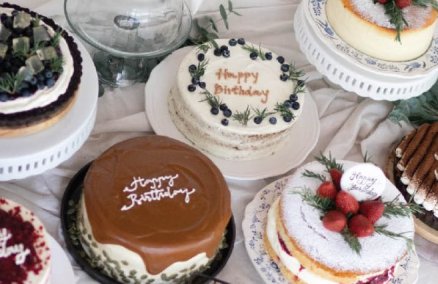The herb-heaviness, sweet-sourness and other flavor profiles of Thai cuisine seem a perfect match with the greener notes, high acidity and pronounced tropical fruit—this last one depends on the winemaking style—of many Sauvignon Blancs. Of course, there are no hard and fast rules. There’s no reason why you can’t enjoy a Cabernet Sauvignon with a thick penang kai or a Semillon-heavy Bordeaux with a greasy tod mun, if that’s your thing. But this is a worthy adventure for wine novices, and to make the experimenting easier on your wallet we’ve rounded up our favorite Thai places that do Sauvignon Blancs by the glass.
Nahm
Domaine Vacheron, Sancerre (Loire, France) B475/glass
The Sancerre area in Loire Valley is renowned for its Sauvignon Blanc grapes, so this is a good opportunity to sample a grape grown on native soil and handled with Old World knowledge. Not only that, the Vacheron property is among the more respected. It’s been in the family for generations and has recently become fully biodynamic (a European version of organic). The wine is acidic and fruity, yes, but with an underlying flinty aroma, which makes us think that it’ll contrast pleasantly with nahm’s pomelo mieng kham canape (B200 a la carte) and cut nicely through one of their spicy nam prik, like the one with minced prawns, pork and shrimp paste (B400). Don’t expect the wine to douse the flames too much, though. For that you’ll need a sweeter wine.
G/F, Metropolitan, 27 South Sathon Rd., 02-625-3333
Spice Market
Kim Crawford (Marlborough, NZ), B650/glass
Marlborough Sauvignon Blancs are all the rage in the international wine market, even though NZ has only been dealing with this varietal for the past forty years. This has partly to do with their winemaking style, which stores the wine in stainless steel instead of oak, so there are no secondary flavors coming from the wood. The result is an amazingly fruity wine with medium acidity. The one from Kim Crawford is heavy on the pineapple, melon, passionfruit and other tropical fruits as well as some earthy, leafy tones. They recommend you have it with lemongrass dishes and summer salads, so try it with Spice Market’s yum tua ploo (winged bean salad, B290) or tom yam koong (B250).
1/F, Four Seasons, 155 Ratchadamri Rd., 02-126-8866
Mahanaga
Siglo de Oro, Santa Helena (Chile), B260/glass
Mahanaga may technically be a fusion restaurant, but there are still plenty of solid Thai flavors to pit against their Chilean Sauvignon Blanc. The one here has just enough acidity to enjoy with tart Thai dishes without making your teeth feel funny. It also has a lot of fruity intensity and hints of pineapples and mangoes and go well with fish and seafood. Try it with Mahanaga’s chilli jam marinated grilled chicken with lime dressing (B220) and their crispy soft-shell crab with peppercorn sauce (B270). You might enjoy the complimentary flavors of the chicken, or the contrast of the fried crab.
2 Sukhumvit Soi 29, 02-662-3060
Soul Food Mahanakorn
Yali (Maipo, Chile), B170/glass
It’s not just the super fancy Thai places that are doing it. Affordable, hip and new, Soul Food Mahanakorn currently does a Yali Sauv Blanc by the glass, and there is already talk of stocking two or three other options. Unlike some Sauv Blancs in Chile which can be too low on the acidity, this one packs a tart punch with lots of lime-like citrus going on, but also a hint of tropical fruit. We think it balances out the deep-fried gai tawt Hat Yai (B140) and the yam hua phlee (B130), and enhances the fish in a leaf (with lemongrass and lime, B160).
56/10 Sukhumvit Soi 55 (Soi Thong Lo), 085-904-2691
5 Tips for Wine Pairings
1. The general wisdom is that the food and the wine must be equal to each other in body and flavor. This is why red meats are often paired with big reds like Cabernet Sauvignon and Amarone and seafood with light whites like Sauvignon Blancs and Vermentinos.
2. On the other hand, it may surprise you that when it comes to finding your wine match, consider the sauce before you consider the meat. It may make sense to pair tuna with a light white, but if the tuna is cooked in a super creamy casserole with lots of garlic and horseradish, for instance, it might need something bolder, like a strong, creamy Chardonnay.
3. There are some exceptions to the rule of complimentary food and wine. Contrasting wines can be useful when you’re eating food that is very fatty and will coat your tongue. For instance, when eating fried chicken, an acidic white wine can help your palate handle the grease. A second grease-cutter is tannin, that astringent quality that some red wines, like Zinfandel, have. Another good example is having slightly sweet, or “off-dry,” white wines with spicy food. The slight sweet taste has a cooling effect.
4. Some foods are notorious for having no good wine match, such as egg yolk, the thick cake-like consistency of which can coat the tongue firmly and make it hard to taste anything, let alone your wine.
5. And final rule is: forget all the rules. No expert can tell you what you like better than you. Relax, there’s no perfect match that you have to find, and there are very few catastrophic matches. Go ahead and experiment.
Advertisement















